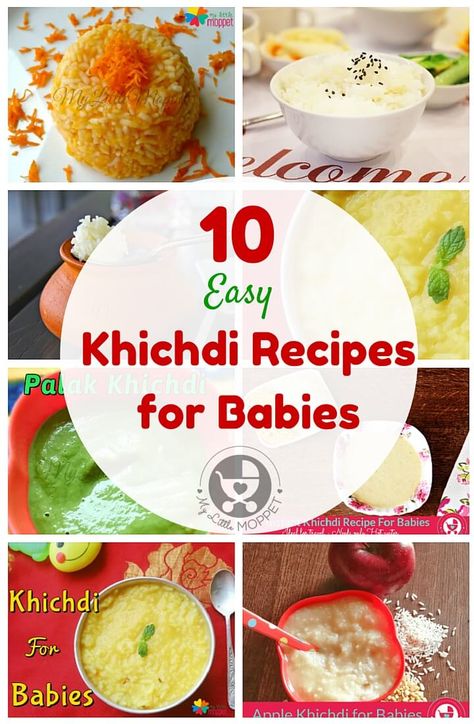What kind of milk can you feed baby rabbits
Caring for Newborn Baby Rabbits
IF THESE ARE WILD BABIES
It’s that time of year again. Wild babies everywhere. But are they at risk?
Wild rabbits hide their nests in plain view, often in the middle of your yard, bushes, etc. If you find a nest that has been disturbed, do the best you can to restore it and leave the babies in there. If a dog discovers the nest, do your best to restore it (with grass, leaves, whatever mama has used), make sure the kits are in there, and find a way to keep the dog(s) away from the nest. Mama will return for her babies and taking them away will seriously decrease their chance of survival. If you do not see the mama—DON’T WORRY—they only nurse their babies a few minutes a day, then they stay away so as to not draw predators to the nest.
If a kit is injured or an animal brings you an injured baby, if you have no choice but to help a baby, please do not try to care or it yourself—-get it to a rabbit vet or a wildlife rehabilitator
- Local wildlife rehabilitator: https://www.
nwrawildlife.org
- List of rabbit vets: http://rabbit.org/vet-listings/
The best thing you can do for wild babies is to leave them alone (restored to the nest) or, if injured, get them to a rabbit vet or wildlife rehabilitator.
DOMESTIC/PET RABBITS
WHERE TO PUT THE BABIES
Make the babies a soft nest area in a box with clean towels. We like to put one folded towel on the bottom and another bunched on top of that, so the babies can snuggle into it. You can also purchase soft nesting wool from a pet store and put that on top of the towel. You can also take whatever nesting material they were in and put it in the box as well. Cover the box almost entirely with a light towel, making sure that there will be enough air so the babies do not suffocate. Leaving about a one inch gap at the top is usually sufficient. Keep the babies in an out-of-the way, QUIET area, such as an adult’s bedroom. If the room temperature is between 68-72 degrees you will not need to provide extra heat, but if it’s cooler than that you will need to provide extra warmth. Use a heating pad set on low and slip it under one half only of the box. We do it this way so that the babies can move to a cooler area if it gets too warm. DO NOT put babies directly on heating pad, as babies can burn themselves very badly.
Use a heating pad set on low and slip it under one half only of the box. We do it this way so that the babies can move to a cooler area if it gets too warm. DO NOT put babies directly on heating pad, as babies can burn themselves very badly.
If the babies were with their mamma, but she is not caring for them (and you are sure she is ignoring them) you may need to separate her from them so they will not get hurt. Rabbit milk is very caloric and the kittens (baby rabbits) only nurse for a few minutes a day, so if you think that she is not caring for them based only on the fact you don’t see them feed…think again. If you do think they are being neglected, you can check: Are they cold? Are they making crying sounds for more than a few minutes before (or at) feeding time? Are they blue? Is the skin shriveled? Check for dehydration: gently pinch together the skin at the nape of the neck. If it sticks together or stays in a tent, they are dehydrated. A healthy kit has a round belly, is warm, gains weight on a daily basis, and snuggles with its litter mates. If they are dehydrated, cold, losing weight or becoming injured, of course, something must be done
A healthy kit has a round belly, is warm, gains weight on a daily basis, and snuggles with its litter mates. If they are dehydrated, cold, losing weight or becoming injured, of course, something must be done
WHAT TO FEED THE BABIES
Baby rabbits should be fed Kitten Milk Replacer (KMR) or goat milk, which you can buy at pet stores, or sometimes even a local veterinarian’s office. Because rabbit milk is the most caloric of all mammals, we add in one tablespoon of 100% heavy whipping cream (no sugar) to each can of KMR. Most kits will not nurse from the baby animal bottles you can buy at stores. Instead, use a sterile oral syringe, which can be purchased at most pharmacies. A better alternative are these nipples, which come the a syringe, but you may not be able to find them locally/right away (link).
It is best to feed baby rabbits no more than twice a day, but sometimes it takes more feedings to get an adequate amount into them, especially at first.
How much to feed varies greatly on what breed of rabbit you are feeding, and how big the kit is, but here is a basic guideline for the daily amount to feed a domestic rabbit who will be approximately 5-6 pounds as an adult (average rabbit size). You can increase the amounts as needed for larger breeds.
To help the kits maintain healthy gut bacteria, go to your local health food store (and get a bottle of ACIDOPHILUS. Ask for the capsules that have the “grainy stuff” inside (they are easier to mix than the “powdery stuff”) and add a bit to the formula at each feeding.
ALL amounts below should be divided into two feedings per day.
- Newborn – 1 week
- 4-5 cc formula
- 1-2 weeks
- 10-15 cc formula
- 2-3 weeks
- 15-30 cc formula
- 3-6 weeks, until weaned
- 30 cc formula
HOW DO I DO THIS?
Baby rabbits feed from their mothers while lying on their backs. You may loosely wrap baby in a soft face cloth or hand towel and lay it on your lap or in the crook of your arm. If bunny will NOT eat this way, of course, do the best you can. It is ABSOLUTELY CRUCIAL to let the baby eat at it’s own pace—especially if it is not suckling from the syringe willingly. If you squirt the liquid in too quickly you can aspirate (get liquid in) the lungs and the rabbit will suffocate.
You may loosely wrap baby in a soft face cloth or hand towel and lay it on your lap or in the crook of your arm. If bunny will NOT eat this way, of course, do the best you can. It is ABSOLUTELY CRUCIAL to let the baby eat at it’s own pace—especially if it is not suckling from the syringe willingly. If you squirt the liquid in too quickly you can aspirate (get liquid in) the lungs and the rabbit will suffocate.
Until their eyes open (10 days): After each feeding it is important to make the bunny defecate and urinate to keep the intestinal tract and urinary system running smoothly. Use a soft cloth or a cotton ball moistened with warm water and gently stroke the genital area until the bunny starts producing stool and urine. Keep stroking until the bunny stops. You are replicating the behavior of the mother rabbit who would lick her young to stimulate them to go to the bathroom. The stool will be soft and may be varying shades of green and yellow. If the urine is brown and gritty, the buns are not adequately hydrated and you need to get them to a rabbit vet ASAP—-it is an emergency. Be sure to clean baby’s mouth with a damp cloth or paper towel, so that no milk dries in the hair.
If the urine is brown and gritty, the buns are not adequately hydrated and you need to get them to a rabbit vet ASAP—-it is an emergency. Be sure to clean baby’s mouth with a damp cloth or paper towel, so that no milk dries in the hair.
Baby rabbit eyes open at about 10 days of age. You may start introducing them to hay and pellets at this point, but no veggies or fruits yet. Just leave some timothy or orchard and alfalfa hay and pellets in a corner of the box where the babies can easily get to them. Make sure it the pellets are plain, high fiber and fresh, with no added goodies such as dried banana chips or seeds. Don’t ever leave a deep water dish in which a baby could drown; instead, use something shallow and rinse and fill it frequently.
If you have any questions, please contact us.
Feeding Baby Rabbits - Is Cow Milk Safe?
*This post may have affiliate links, which means I may receive commissions if you choose to purchase through links I provide (at no extra cost to you).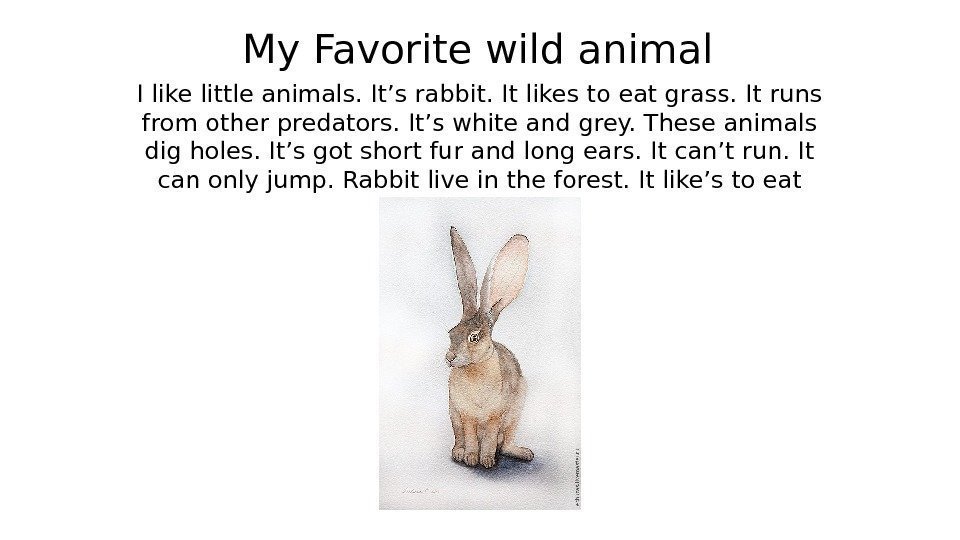 As an Amazon Associate I earn from qualifying purchases. Please read my disclaimer for additional details.
As an Amazon Associate I earn from qualifying purchases. Please read my disclaimer for additional details. Like many other mammalian babies, baby rabbits need milk to survive at birth. They can’t survive without milk. But what happens when the mother rabbit is not on hand to feed the baby rabbit? When the mother is absent, baby rabbits can survive on other types of milk but only a few types.
So can baby rabbits drink cow milk? No, it is not advisable to feed baby rabbits with cow milk.
Baby rabbits should not be fed cow milk. Rabbits have delicate stomachs and cannot vomit. Cow milk contains high levels of substances that cannot be digested by rabbits. These substances can become toxic in the stomach of the rabbits and since rabbits cannot vomit, they become sick or die.
Due to the sensitivity of their stomachs, you have to be very careful while feeding baby rabbits. There are some things you should know before you start feeding them. These things are discussed thoroughly in the rest of this article.
These things are discussed thoroughly in the rest of this article.
Table of Contents
What Types of Milk Is Best for Baby Rabbits
By now you know not to feed your baby rabbit with cow milk. The presence of hormones, lactose, drugs, and pus in cow milk spells danger for baby rabbits. But if they cannot drink cow milk, what type of milk can they drink?
The best milk for baby rabbits is the special formula called Kitten Milk Replacer (KMR). KMR contains whey protein, probiotics, vitamins, prebiotics, fat, and carbohydrates.
These ingredients are present in similar quantities like natural rabbit milk. KMR basically mimics the milk from mother rabbits.
View this post on Instagram
A post shared by Nyein Chan Lu (@nyein_chan_lu) on
KMR usually comes in powder form. You dissolve this powder in warm water and stir until it becomes like milk.
You dissolve this powder in warm water and stir until it becomes like milk.
Unlike cow milk, KMR can easily be digested by baby rabbits.
Apart from KMR, another type of milk that you can feed your baby rabbit is goat milk. But you must be cautious with goat milk. There are many goat species and the content of their milk may vary significantly. Many experts recommend milk from Meyenburg goats over other types of goat milk.
Wild rabbits would tolerate goat milk more than domestic rabbits. So, if you have domestic rabbits, KMR is the best for them.
Goat milk contains less lactose, protein, and fat than cow milk. Also, goats are not treated with hormones in the same way cows are. These are the reasons goat milk is easier to digest for rabbits and why it is more tolerable.
Feeding a Baby Rabbit
Baby rabbits cannot be fed arbitrarily because of their sensitive stomach. The volume of feed to give them and the frequency of feeding are limited. Rabbits require infrequent feeding with small volumes of feed.
Rabbits require infrequent feeding with small volumes of feed.
If you try to feed a baby rabbit more times than you should or with more volume of milk than you should, the rabbit may die.
At birth, feeding them 2 – 2.5 ml twice daily is recommended but this should be increased every week until feeding stops. Baby rabbits should never be fed more than twice a day.
View this post on Instagram
A post shared by Ivana MS (@ivana.ms) on
Apart from feeding volume and frequency, you must pay attention to the feeding posture. Baby rabbits should be fed while they are in an upright position. Feeding them in other positions may lead to choking and that can be fatal.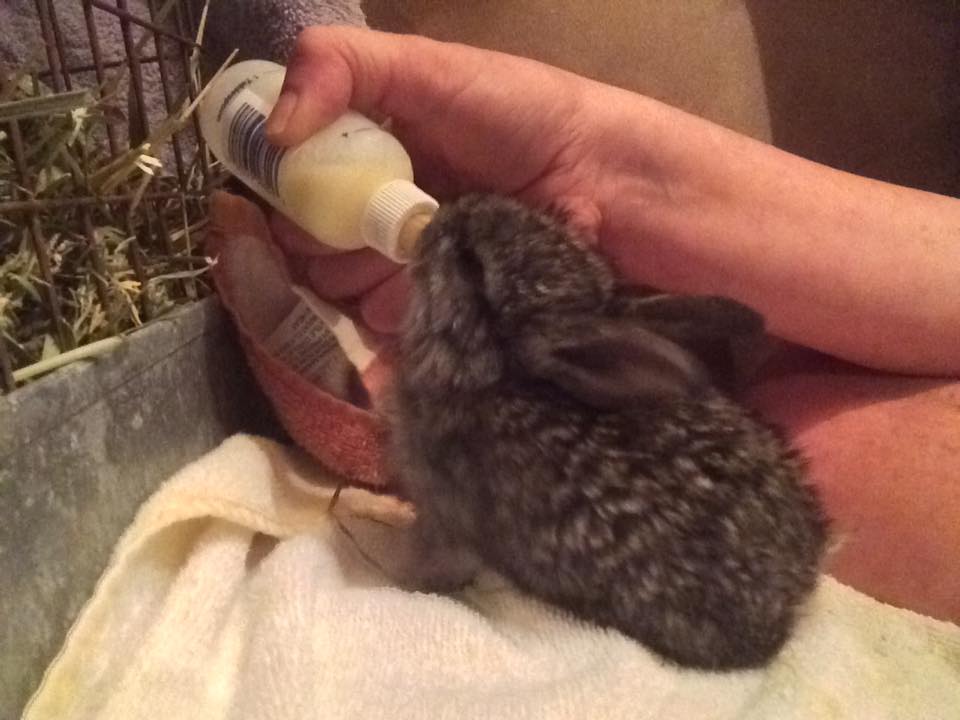
You should get a syringe, a special feeding bottle for rabbits, or a dropper to feed them. Ensure that these items are sterilized/disinfected before you use them. With any of these feeding apparatus, you can feed the rabbit slowly. Rushing the feeding process can cause the rabbit to choke.
Recommended Feeding Volume
At different ages, these are the volume of milk recommended per feeding for baby rabbits:
| Age | Volume of Milk for Each Feeding |
| 0 – 7 days | 2 – 2.5 ml |
| 1 – 2 weeks | 5 – 7 ml |
| 2 – 3 weeks | 7 – 13 ml |
| 3 – 6 weeks | 13 – 15 ml |
How to Know If the Baby Is Still Young Enough to Be Drinking Milk
For about 3 weeks, baby rabbits consume only milk. But between week 3 and week 5, most baby rabbits would have started eating some solid vegetables alongside their milk. Milk is essential at this point because it eases the transition.
Solid food will introduce new microorganisms into the stomach of the bunnies. Knowing how sensitive their stomachs are, these microorganisms can be harmful to them. But with milk, there would be no harm because the nutrients help the bunnies adjust to the emerging flora.
Some bunnies stop yearning for milk between 6 – 8 weeks. But for those who still thirst for milk by the 8th week, you may start to wean them. You can do this by diluting the milk with clean water bit by bit until they no longer thirst for milk.
What You Should Do If You Find Baby Rabbits Without Their Mother
If you ever come across a nest of baby rabbits without a mother, your first instinct should not be to pick them up or take them home. In many cases, the little bunnies are not orphaned. Their mothers leave them in the nest as a way to protect them.
Mother rabbits build their nests in places they consider to be safe. They feed their babies once or twice daily. Then they leave the babies in the nest for as long as 23 hours. They do this knowing the babies can survive on the high-calorie content of their milk.
Then they leave the babies in the nest for as long as 23 hours. They do this knowing the babies can survive on the high-calorie content of their milk.
The mothers can outrun predators with ease. But the babies would be helpless. By staying away from the babies for the most part of the day, the babies have a higher chance of survival.
So, when you see baby rabbits alone in a baby nest leave them until you are sure that they are truly orphaned.
If you see the following signs, then the baby rabbits are most likely orphaned:
- Wrinkled and cold skin
- Blue-tinted skin
- Shrunken stomach
If you see these signs, you should contact a wildlife center. But if these signs are absent, you may check back after a day to be sure that they are not orphaned.
Cow milk is toxic to baby rabbits and should not be given to them under any circumstance. If the mother rabbit is unavailable to feed the babies, Kitten Milk Replacer (KMR) and goat milk are the best alternatives.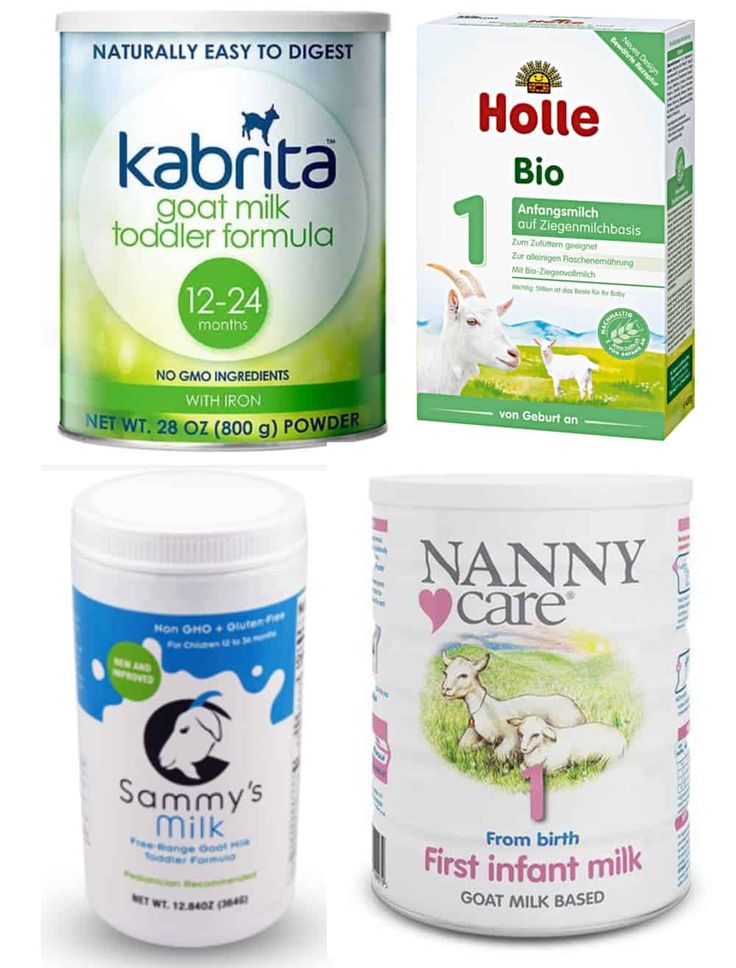 These types of milk are non-toxic and they contain nutrients that can be digested by baby rabbits.
These types of milk are non-toxic and they contain nutrients that can be digested by baby rabbits.
Resources
The following sources were used in this article:
- https://www.rabbitcaretips.com/can-baby-rabbits-drink-cow-milk/
- https://www.petsial.com/can-baby-rabbits-drink-cows-milk/
- https://animals.mom.me/kind-milk-give-newborn-bunnies-10208.html
- http://www.bio.miami.edu/hare/orphan.html
How and how to feed the newborn rabbits
Councils to the hostess
Content of the article:
- How to feed newborn rabbits
- video
Newborn rabbits need milk
- Photo
- Getty 9002 a lot of patience is quite possible. First of all, you need to decide on the choice of food.
- fresh cow's milk.
 This is the easiest option, but cow's milk is not fat enough for rabbits, so you need to dilute it in half with regular condensed milk;
This is the easiest option, but cow's milk is not fat enough for rabbits, so you need to dilute it in half with regular condensed milk; - goat's milk is excellent for baby rabbits. It contains enough fat to meet the needs of the baby's body;
- powdered milk for animals. It can be purchased at a pet store. It is diluted according to the instructions.
- as soon as she has calved, the female refuses the young rabbits and abandons them;
- the female rabbit has no milk or has developed mastitis;
- the female is in a very serious condition after birth or she has died;
- other nurse does not accept babies.
- Find a litter nurse. This course of events is possible if the breeder has several queens. You can’t just plant baby rabbits with another lactating female. There is practically no chance that she will accept someone else's offspring.
Therefore, remove the rabbit for half an hour in another cage, and wipe the babies with fluff and straw from her dwelling. The nurse will return to the cage and will probably take on new wards. - Awaken the parental instinct. Most often, it is after the first birth that a mother does not want to feed her babies. Try to solve this problem by simply holding the rabbit during several feedings.

- Feed with a syringe and a rubber pipette tip by making a few small holes in it.

- eye drop bottle is suitable for the procedure. For convenience, use it together with a pipette tip.
- Small baby bottle is useful for older animals.
- Goat milk. The best option for artificial feeding of rabbits. There is no need to dilute or add anything, because the composition is similar to rabbit milk, only slightly inferior to it in fat content.
- Cow's milk. The most affordable and common alternative to rabbit milk. In its pure form, it cannot be fed to babies, because it lacks carbohydrates in its composition.
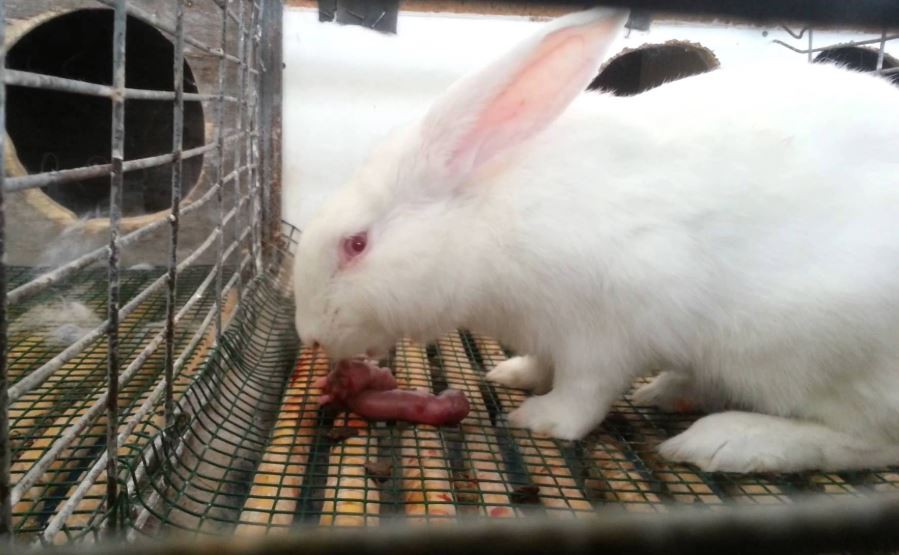 Mix cow's milk with condensed milk in a ratio of 3:1. Heat the mixture for 40-60 minutes. at a temperature of 70. Before feeding, cool to 37 degrees.
Mix cow's milk with condensed milk in a ratio of 3:1. Heat the mixture for 40-60 minutes. at a temperature of 70. Before feeding, cool to 37 degrees. - Special blends. Sold in pet stores and veterinary pharmacies in a large assortment. Buy milk substitutes designed for rabbits or dogs. In a pinch, suitable food for cats. In terms of components, their composition is as similar as possible to rabbit milk.
- Infant formula . Such food is suitable for rabbits if it contains a minimum of sugar and additives.
- The stomach of rabbits becomes clogged with a jelly-like mass, because of which the animals often die.
- Females become aggressive, lose the ability to reproduce.
- There are cases of cannibalism among individuals.
- Pear, rowan, oak, chestnut.
- Pine, juniper.
- violation of metabolic processes;
- decrease in offspring productivity, increase in the number of miscarriages;
- slow growth of newborn animals;
- diseases of the gastrointestinal tract;
- water-salt imbalance and diseases associated with blood formation.
- 500 g feed chalk;
- 500 g red clay flour;
- 300 g ground hardwood charcoal flour;
- 5 st. l. salt;
- 3 tbsp.
 l. fodder sulfur.
l. fodder sulfur. - Getting used to milk substitutes, rabbits are undemanding to eat.
- Good appetite leads to weight gain and growth of individuals.

- The diet is adjusted to the person and his capabilities.
- Nutritional value, composition of vitamins and minerals in substitutes is much lower than in natural rabbit milk.
- Inability to transfer antibodies, which means weakened immunity of the offspring.
- Difficulty in nipple training.
- Baby rabbit may be injured while feeding.
- The constant presence of a person next to the kids for care and attention.
What to feed newborn rabbits? As a rule, for this they apply:
Milk temperature must be measured before feeding. It should be 36-37 ° C.
The pet store also sells special feeding equipment, but you can get by with a pipette or syringe without a needle. Before the first use, they must be washed well and doused with boiling water.
It is very important not to overfeed the animals. For newborn rabbits, the daily dose is 5 ml, no more than 1 ml should be given per feeding. Thus, the diet is also established: babies eat five times a day.
When the rabbits are 7-10 days old, the daily amount is doubled and is 10 ml. Two-week-old pups need 15 ml.
Milk should not be poured into the mouth in a continuous stream. The mouth must be moistened and wait until the rabbit licks everything.
The mouth must be moistened and wait until the rabbit licks everything.
It is necessary to closely monitor the well-being of babies. They should be active, but not too fussy. In healthy rabbits, the stomach is elastic and slightly convex. Until they are two weeks old, after each feeding, the abdomen should be gently massaged with a damp cotton pad in the direction from the navel to the hind legs. This procedure is very important, it helps to empty the intestines.
The color of feces in animals should normally have a greenish tint. Brown color indicates problems that have arisen.
To prevent infection in rabbits, all syringes and pipettes must be thoroughly rinsed after each use.
Also interesting to read: cork underlay for linoleum or laminate
Wday.ru editors
Readers today creepy toilets that can make you blind
A terrible secret that Boris Moiseev kept all his life - the artist's fans were shocked
People with this blood type are descendants of aliens - check, suddenly it's about you
Why cats sharpen their claws only when the owner - you will be surprised
substitutes milk, feeding, newborn care
Sometimes it happens that young rabbits, barely born, are left without mother's milk and care. Then these worries fall on the shoulders of a person. Feeding rabbits without a rabbit is a serious and responsible matter, because the life of babies depends on the speed of decision-making and subsequent actions.
Then these worries fall on the shoulders of a person. Feeding rabbits without a rabbit is a serious and responsible matter, because the life of babies depends on the speed of decision-making and subsequent actions.
Why are baby rabbits left without mother's milk and care? What is the danger?
The decision in favor of artificial feeding is made by the farmer for one of the following reasons:
It is especially dangerous for rabbits when the female dies without having time to feed them with valuable colostrum for the first time. It contains antibodies necessary for babies, which contribute to the development of their own immunity.
Human care and care will not replace mother's cubs, and incorrect actions on the part of breeders increase the mortality rate.
Ornamental rabbits are less likely to survive, and meat breeds, even when bottle-fed, grow up to be healthy, strong individuals.
What to try before artificial feeding?
The purpose of artificial feeding is not only to ensure the satiety of rabbits, but comprehensive care for offspring. Before you begin your duties, try the following alternatives:
With a favorable outcome, feeding on mother's milk, the rabbits will quickly get stronger and begin to gain weight. But it happens that these tips do not help.
How to properly feed baby rabbits for the first 30 days?
Baby rabbits are born completely blind, without wool. The first fluff on the body begins to grow on the 6th day, and the opening of the eyes occurs on the 10th day. Newborns weigh 60-90 g, but with comprehensive care and good nutrition, they quickly gain weight and grow.
A farmer should prepare for artificial feeding of offspring - master the skills of care and purchase equipment.
Tools
Baby rabbits require teats and containers.
Buy Animal Feeding Kit from the shop. It includes a special syringe with rubber nozzles of various shapes and sizes. Such a set is sold in the form of a bottle with several special nipples.
You can also use improvised means:
The process of artificial feeding should be as close as possible to natural.
Before opening their eyes, the reaction of rabbits to teat substitutes is weak. When pouring milk into the mouth, be careful and do not rush, otherwise the rabbit may choke or choke.
Milk substitutes
Newborn baby rabbits require high quality nutrition. Rabbit milk substitutes include:
In the presented video you can see the principle of artificial feeding of rabbits:
Thus, the most suitable food for newborn rabbits is special dry mixes, and cow's milk is the least preferred option.
Feeding procedure
During the procedure, hold the animals upright, firmly, but without crushing. At first, rabbits may not respond to simulated nipples. Be patient.
Gently moisten your baby's mouth with milk, he will lick it off himself. Repeat several times. This will stimulate the sucking reflex.
During the feeding procedure, be careful not to get liquid into the animal's respiratory tract. This is fraught with the death of the rabbit.
Make sure that the tummy does not overflow, because babies themselves can not yet determine the level of their satiety. Overeating causes indigestion and related problems.
Feeding liquid should be 37 degrees. Store milk for up to 3 days in the refrigerator, and always use freshly prepared formula for feeding.
Adjust the diet according to the needs of the cubs. Well-fed babies sleep quietly, and hungry babies squeak and actively look for a source of food.
Dosage and frequency
The amount of mixture and the frequency of feeding are directly dependent on the age of the rabbits.
The female feeds the young rabbits 1-3 times a day. Her milk is very nutritious, so many feeding sessions are enough for rabbits for proper development, growth and weight gain.
But no mixture can replace rabbit milk, so bottle-fed babies are fed up to 6 times a day.
In the first 2 days, rabbits need a few drops of food per dose, even 1 ml of the mixture is too much for them.
Gradually, the amount of milk necessary for the development of the cubs increases, and the number of feedings decreases.
Artificial feeding by age
Organizing artificial feeding is a responsible business. You need to be extremely careful when choosing a diet for rabbits, depending on their age and physical health. After all, errors in the quantity and quality of the diet adversely affect the cubs.
From birth to 5 days
A newborn baby rabbit needs 1 drop of nutrient fluid. For the first day they feed 5-6 times. Since babies have not yet learned to swallow on their own, care must be taken.
On the second day, 4-5 meals are enough. On the 5th day - 4 feedings. The daily norm of milk is 5-6 ml. By the end of this period, rabbits with normal development double their weight.
From 6 to 14 days
Animals grow up and the amount of nutrient mixture per feeding increases. They drink 7-10 ml of milk per day. The number of feedings remains the same, or decreases to 3. The weight of the rabbits reaches 250 g.
From the 15th to the 30th day
From the 15th day the animals are transferred to two meals a day. In the first 2-3 days, observe the behavior of the young and, if signs of hunger are present, supplement them with a small amount of formula in the 3rd feeding.
The amount of the mixture per day by the end of the month reaches 60 ml. While this is their main food. Weaning from the nipple should be on the 20-25th day.
The readiness for the introduction of complementary foods is determined by the condition of the teeth. If the molars have replaced the milk teeth, then solid food can be gradually introduced and taught to drink from a saucer.
If the molars have replaced the milk teeth, then solid food can be gradually introduced and taught to drink from a saucer.
Weight of animals by the end of the period reaches approximately 500 g.
Feeding
Starting from the third week, put small piles of dry grass in the cage - this will prepare the rabbits for solid food.
At this time, it is important to monitor the change in the baby's stool. Remove hay from the diet immediately if diarrhea occurs. If adaptation to new food goes without problems, then add a small amount of compound feed, grass, carrots.
From the 31st day, if there is no shortage in weight, milk is gradually removed from the diet of rabbits. When the offspring are 45 days old, their diet completely switches to an adult.
Vitamin A and Vitamin D
In the wild, baby rabbits get their vitamins and minerals from their mother's milk and then from a varied adult diet. Artificially fed individuals need more vitamin supplements.
Artificially fed individuals need more vitamin supplements.
If the body lacks vitamin A , then rabbits suffer from a runny nose and dry eyes. This vitamin is responsible for the desire to reproduce and have healthy offspring, as well as the healthy functioning of the nervous system. Its sources are: beet tops, carrots, cabbage leaves, young grass, etc.
Vitamin D is responsible for bone formation. With its lack, growth retardation and various deformities of the limbs and spine are possible. Vitamin D is produced by the body itself under the influence of sunlight. This will help bone meal, fish oil, milk. Feed food in places where the sun's rays do not have access, because under their influence vitamin D is destroyed.
Oatmeal and oat sprouts
Oats are a fundamental grain in rabbit nutrition, containing a storehouse of vitamins and microelements. Its calorie content is 336 kcal/100 g. It can take up to 50% of the total mass of feed. Rabbits on such feed gain weight well, but oats do not cause obesity.
Rabbits on such feed gain weight well, but oats do not cause obesity.
This cereal is introduced into the diet of rabbits as soon as they begin to feed on their own. First, they are fed with oatmeal or crushed grain, and later they switch to feeding with whole grains.
Animals eat such food with pleasure up to 5 times a day, and adults - 3 times a day.
Oat seedlings have a good effect on the reproductive system of rabbits. For mating, it is introduced into the diet of both males and rabbits. Oats help lactating females recover after birth and stimulate the production of nutritious milk.
Useful substances, which are rich in germinated oats, have a beneficial effect on the gastrointestinal tract of animals. Appetite increases, fur becomes beautiful and shiny, body weight grows.
Be sure to include a water bottle in the cage if the rabbits diet is dominated by dry cereal food.
Bone meal and chalk
Bone meal is a powder from the bones of animals and birds, the most valuable source of calcium, phosphorus, fluorine, zinc, iron, protein and other micro and macro elements.
By introducing it into complementary foods, the likelihood of diseases associated with the musculoskeletal system in rabbits is significantly reduced. Thanks to proteins, the muscle mass of animals grows faster.
The doses indicated on the packaging of bone meal must be strictly observed. An overdose is even more dangerous than the problems associated with the absence of this bait:
If the beginnings of these problems appear, reduce portions or remove flour from the diet.
Chalk is a safe mineral supplement providing calcium to the body. It can be used in powder form, in lump form and in mineral briquettes. Chalk is useful for the prevention of diseases of bone tissue.
Branches and acorns
Branches of trees and bushes are used not only as food. Some are useful for the prevention of ailments.
Some are useful for the prevention of ailments.
So, for example, walnut branches remove parasites from the body, linden and willow - work as an anesthetic, birch - as a diuretic. Give them to rabbits infrequently, as needed.
Trees and shrubs whose branches can be used as permanent feeding include: .
Trees whose branches can be given to rabbits occasionally :
Do not use branches of bird cherry, lilac, elder, rosemary in the diet.
Another nutritious food for rabbits is acorns. You can feed them both green and dry. The norm of acorns per day for an adult is 50 g.
Introduce them into the diet gradually - first in the form of flour, as an additive to the main grain feed, and then as an independent complementary food. Rabbits love to chew on them.
For more information, read our article on how, when and what to feed rabbits.

Edible salt
Salt is used for more than just seasoning. Chlorine ions contribute to the production of hydrochloric acid in the composition of gastric juice, and sodium ions are responsible for the transmission of nerve impulses.
Rabbits gnaw on the wooden partitions in the cage due to salt deficiency. This indicates such problems:
Edible salt is usually given together with chalk. For this, mineral briquettes are prepared. The following components are required:
Mix ingredients with water until a thick dough is obtained. From it, fashion shapes the size of a matchbox. String them on the wire. Dry first in the shade and then in the sun. Fire it like clay in a kiln.
Place one in each rabbit cage. They themselves will learn to gnaw a briquette in the amount that their body requires.
Acidophilus
Rabbits are not very healthy, the gastrointestinal tract is their weak point. Gastrointestinal stasis is often found in these animals, when the stomach stops working and the individual dies.
Acidophilus is a complex of beneficial lactobacilli. It helps digest food in the large intestine and protects against harmful bacteria that can lead to bloating, diarrhea, and other problems.
This drug will also help when taking antibiotics, when the entire intestinal microflora is destroyed.
Caecotrophs are the primary feces of the rabbit. It has an oblong shape, often reminiscent of a bunch of grapes due to sticky spools. The color varies from light green to black. The smell is unpleasant, sour.
The color varies from light green to black. The smell is unpleasant, sour.
This feces is formed in a special compartment of the caecum, which is found only in lagomorphs. Therefore, do not confuse caecotrophs with ordinary feces.
Usually rabbits eat caecotrophs from the age of 20 days as soon as they leave the body. In this way, they re-absorb vitamins and minerals. Without this, the animals would suffer from beriberi.
If there are too many caecotrophs, the animal does not eat them, then you are overfeeding the rabbit with cereals. Remove grains from the diet for a couple of days, leaving water, branches and hay.
The second reason may be worms. Get rid of the parasites and everything will be back to normal.
Artificial feeding of rabbits has its positive and negative sides.
The benefits include:
Formula-feeding disadvantages:
Baby rabbit care
The earlier the baby rabbits were left without a queen, the more complex care they need. The conditions of detention and the feeding regime require a great responsibility and dedication from a person.
Lighting and heat
Newborn rabbits require special care, attention should be paid to lighting and heat when rearing babies.
There must be a place in the cage where the sun's rays do not reach. Direct solar radiation is dangerous for animals. Daytime lighting should be dimmed, and it is recommended to turn off the lights at night.
Daytime lighting should be dimmed, and it is recommended to turn off the lights at night.
Keep the rabbits warm. To do this, build a nest from the fluff of adult rabbits or put a heating pad in the cage. The optimum temperature is considered to be when a person’s hand is comfortable, and not hot.
Hygiene
Cleanliness in the care of young rabbits is essential, because without immunity they are more susceptible to germs and bacteria.
Boil utensils and teats before use. Prepare the mixture before feeding, according to the instructions. Store milk in the refrigerator for up to 3 days.
Before feeding, wash your hands with fragrance-free soap and dry with a towel. After feeding, clean the babies from the remnants of food and bowel movements.
Abdominal massage
Bowel and bladder emptying requires special attention, because babies do not know how to cope with it.
Before feeding, the female licks the baby rabbit, pressing on the stomach with her tongue, moving from the navel to the hind legs. Thus, it causes the intestines and bladder to empty.
Thus, it causes the intestines and bladder to empty.
A person who substitutes a mother for rabbits should not forget about this procedure. Otherwise, the bladder will burst.
Before each feeding, massage the rabbit's belly with a damp soft cloth or piece of cotton wool.
This manipulation is completed when the offspring are over 14 days old.
In healthy rabbits, the belly is elastic and slightly convex. If it is sunken, then this is a sign of gastrointestinal problems.
In the video below, the breeder demonstrates how to massage the belly of a rabbit before feeding:
Caring for orphaned rabbits requires a lot of strength, skills and patience from a person. Only in this way will they survive and grow into beautiful healthy individuals.


